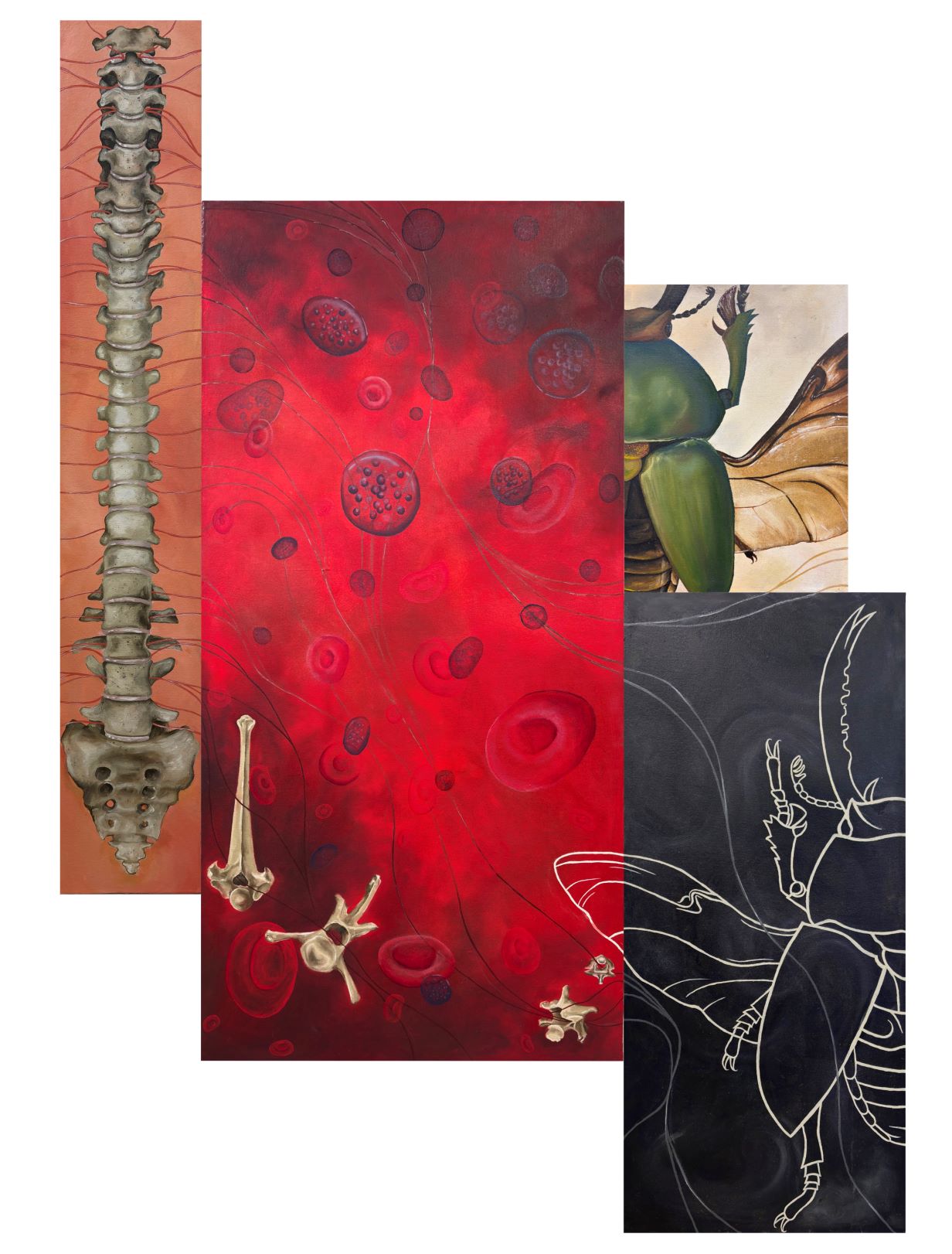Senior, Stamps School of Art & Design

Oil painting on wood panels
Abstract
(In)vertebrates explores the classification system of species through the relationship between invertebrates and vertebrates. Animals are classified by the presence or absence of vertebrae, creating an interesting dynamic between vertebrates, species with spines, and invertebrates, species without spines. Furthermore, while vertebrates function by having red blood cells, invertebrates contain hemolymphs, a fluid surrounding the tissues to transport nutrients and waste throughout the body, analogous to blood in vertebrates. Each panel establishes the intertwined relationship between science and art, proposing that one cannot exist without the other, and exhibits a work of art where each concept can equally coexist.
The first stage began by establishing the separation between invertebrates and vertebrates, and how vertebral structures differ in each animal. Featured in the painting is a human spine to represent the evolution of the human race, a horse vertebrae highlighting the thoracic structures of large mammals, a direwolf vertebrae to represent extinct species and was drawn from images from fossil records, a house cat cervical vertebrae featuring a warm-blooded mammal, and a cervical vertebrae from a ball python to exhibit a cold-blooded vertebrate.
This concept inspired research of invertebrates’ structures, opposed to those with backbones, and led to the study of insect anatomy and entomology. In this stage of research, I learned how to pin a beetle in order to study its anatomical structures and used to paint from observation. Depicted in both a hyper realistic style and minimalist linework, the beetle represents the invertebrates classification category having exoskeletons. Furthermore, beetles are the most diverse biological species and this painting invokes recognition of biodiversity.
Finally, the large red panel couldn’t be complete without some other form of connection. Resembling blood, the rich, red panel influenced research on red blood cells and proposed questions of how “blood” works in invertebrates. Through this discovery the piece began establishing the intertwined connection between science and art, proposing that one cannot exist without the other. While vertebrates function by having red blood cells, invertebrates contain hemolymphs, a fluid surrounding the tissues to transport nutrients and wastes throughout the body, analogous to blood in vertebrates. These structures, similar in shape, depict a unique, intriguing artistic pattern that created a dimension and form of space in the final piece. While each element has a scientific principle, each structure also plays a defining role in the artwork, giving it both strong connections to science and art.
Therefore, (In)vertebrates established that one cannot exist without the other and showcases an exhibit where both concepts equally coexist. Viewers can recognize in this piece that science has a place in the field of art and design, while art also has a place in the field of biological and natural science.
